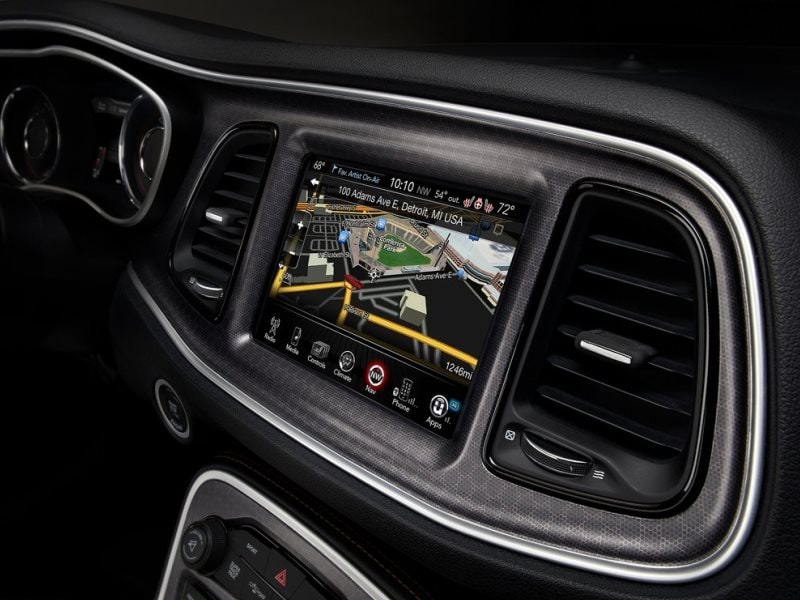Recent Articles
Popular Makes
Body Types
2016 Dodge Challenger Road Test & Review
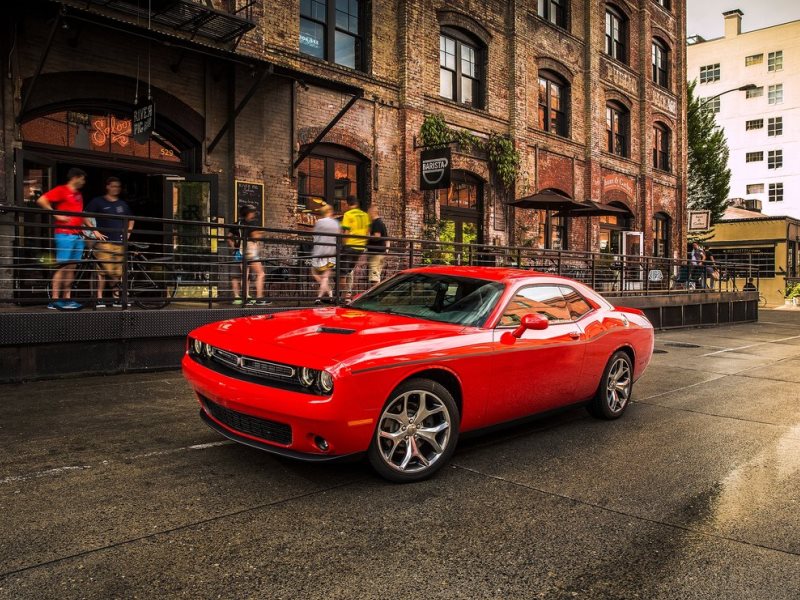
If you’re longing for those thrilling days of yesteryear, but also want modern amenities in an outrageously fast coupe; a 2016 Dodge Challenger is waiting for you to slap a vanity plate in its rear bumper. With a revered legacy going all the way back to the halcyon days of the original pony car era, the Dodge Challenger is one of the most recognized names among high-performance automobiles.
After using it to introduce the highest output V8 engine ever installed in a production automobile, Dodge brings the 2016 Challenger to market with limited edition models featuring its purple “Plum Crazy” heritage hue. Originally debuting in 1970, the shade will be offered only for the 2016 model year before being returned to the vaults once again.
Models/Pricing
There is a nearly infinite array of configurations for the 2016 Dodge Challenger. Between engine selections, hood configurations, striping kits and trim packages, they’re far too numerous to cover in significant detail here.
For openers, there are ten trim packages offered; ranging from the $26,995 Challenger SXT to the $59,995 Challenger Hellcat. Key stops in between are the $31,995 Challenger R/T, and the $42,495 392 Hemi Scat Pack Shaker.
In order, they are Challenger SXT, SXT Plus, R/T, R/T Plus, R/T Shaker, R/T Plus Shaker, R/T Scat Pack, 392 Hemi Scat Pack Shaker, SRT 392, and SRT Hellcat.
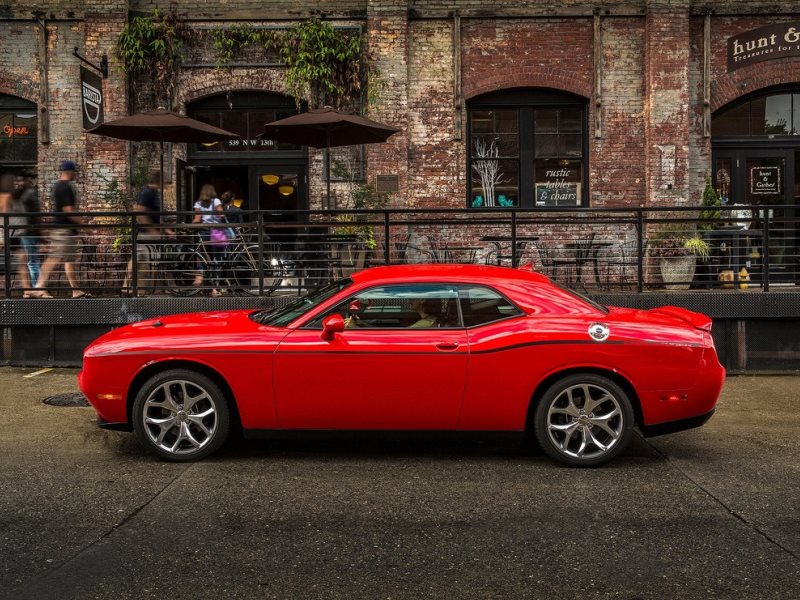
Standard Features/Configurations
The Challenger SXT comes with a V6 engine, 18-inch alloy wheels, automatic headlights with LED halo rings, heated mirrors, keyless ignition and entry, cruise control, and automatic dual-zone climate. Interior amenities also include a tilt-and-telescoping leather-wrapped steering wheel, a power adjustable driver’s seat, a 60/40-split folding rear seat, cloth upholstery, an auto-dimming rearview mirror, Bluetooth telephony and audio streaming, a five-inch touchscreen, and a six-speaker audio system.
Challenger R/T adds a V8 engine, 20-inch wheels, bigger brakes, a tail spoiler and a backup camera. R/T Shaker adds a cold-air induction scoop protruding through the hood. R/T Scat Pack gets a more powerful V8 engine, Brembo brakes, a freer-flowing exhaust system, a heated steering wheel, performance tuning for the steering, suspension and brakes, a shorter axle ratio, and performance reporting applications for acceleration times, cornering loads and the like.
The Plus versions of each of those trim packages add foglights, leather, heated seats, an Alpine stereo system, an 8.4-inch touchscreen, smartphone app integration, voice activation, and satellite radio.
The 392 Scat Pack Shaker is basically the same as the R/T Scat Pack, but with an upgraded suspension system, recalibrated power steering, forged alloy wheels, and an 18-speaker Harman Kardon sound system.
The SRT Hellcat adds an even more powerful engine, a more aggressive steering system, automatic wipers, and automatic high beam control.
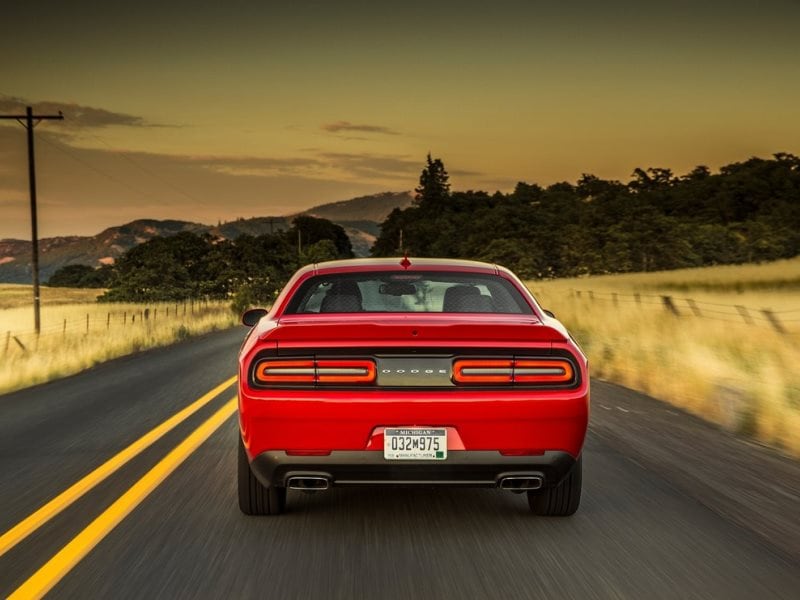
Styling
While the 2016 Dodge Challenger’s key competitors look like caricatures of iconic models within their history, the contemporary Challenger looks like a direct descendant of the original. The broad flat hood, the set back greenhouse, the short trunk, the staggered shoulder line, they’re all there. Another throwback to the old school is the available “Shaker” hood intake system.
The narrow grille appears to house four round headlights with “halo” daytime running lights. And in most cases this is true. However, on the 707-horsepower Challenger SRT Hellcat, the inside right headlight is an opening for the engine’s cold air intake.
At the rear, the classic full-width taillights remain, but with a modern twist; LED light pipes form the traditional Dodge racetrack design.
Interestingly, the Challenger looks much smaller in photographs than it actually is. In person, the Dodge is a very substantial car with a great deal of presence.
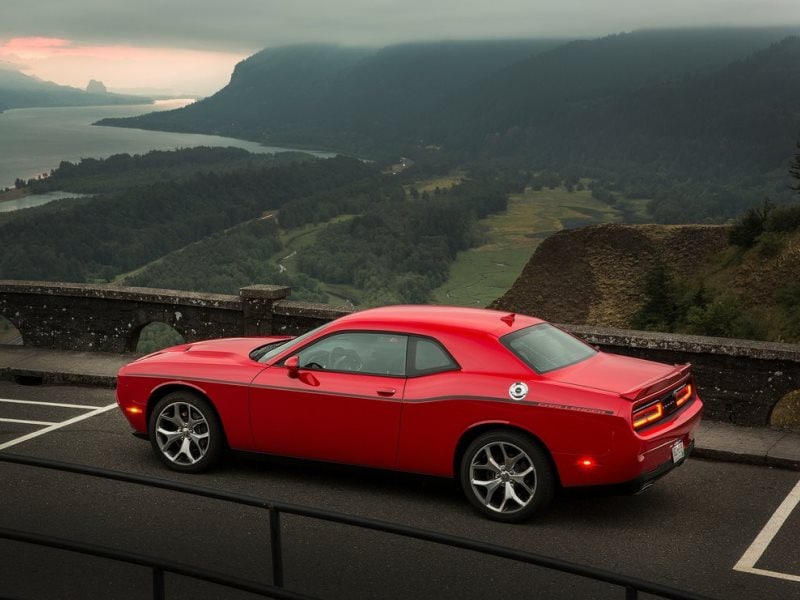
Interior Design
In many ways, the interior design stays true to the original Challenger as well.
You’ll find a respectfully updated interpretation of the original layout of the dash, instruments, and center console. The “T” shaped transmission selector for automatic-equipped models is a nice retro touch, while the thoroughly modern steering wheel offers controls for a variety of secondary functions.
It’s all done in a very businesslike fashion, with all the controls arranged around the driver, and canted toward the control position as well. The 2015 redesign upgraded the materials, added some nice detailing, and generally made the interior a less stark environment. Contributing heavily to this is the availability of two-tone upholstery treatments
The centerpiece of the dash is the touchscreen display, and if you can at all make it work in your budget, we highly recommend springing for the 8.4-inch display. Readily legible, with larger “buttons” and additional features, it’s a very usable option.
One of the things we really appreciate about the interior of the 2016 Dodge Challenger is its relative spaciousness when compared to the other cars in its competitive set. Grown folks can actually ride in the Challenger’s back seat, the trunk is good for an honest 16.2 cubic feet of stuff, and the rear seatbacks fold to expand cargo capacity.

Safety Equipment/Crash Test Scores
Dodge has fitted 2016 Dodge Challenger with a comprehensive slate of available safety features.
These include forward collision warning, adaptive cruise control, rain-sensitive windshield wipers, automatic high-beam headlamps, blind spot monitoring, rear cross traffic detection, forward collision warning, and a rear parking sensor array.
Naturally, the more standard safety features are incorporated as well; ABS, traction control, stability control, a full complement of airbags, tire pressure monitoring, and even a driver’s knee airbag.
NHTSA says the Challenger is a five-star car in overall protection and side crash protection. The agency rates Challenger with four stars in frontal protection.
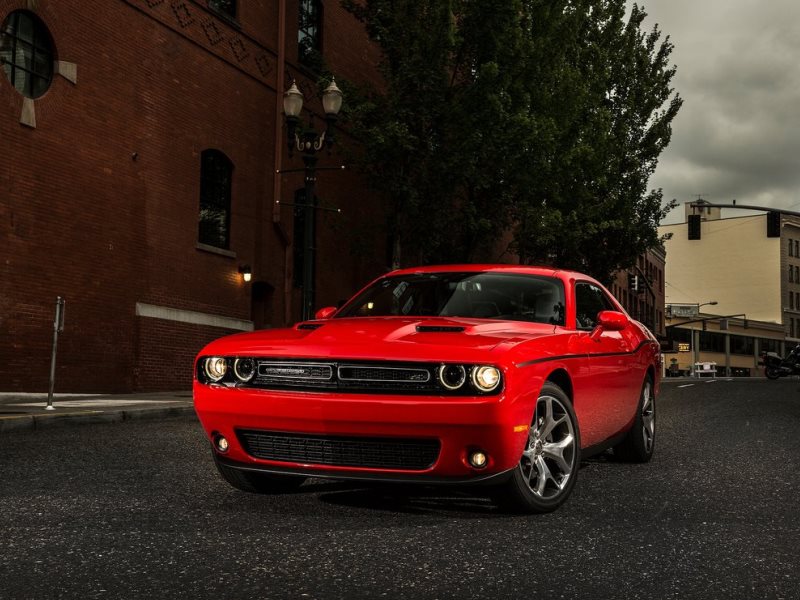
Photo by Fiat Chrysler Automobiles
Powertrains/Fuel Economy
The 3.6-liter V6 uses cold air induction and a true dual exhaust system to generate 305 horsepower and 268 ft-lbs of torque. The engine is offered only with an eight-speed automatic transmission. Fuel economy is rated at 23 mpg combined.
The 2016 Dodge Challenger’s 5.7-liter V8 makes 375 horsepower and 410 ft-lbs of torque with the six-speed automatic. If you go with the eight-speed, you’ll get 372 horsepower and 400 ft-lbs from the 5.7. Fuel economy with the manual is 18 mpg combined; the automatic returns 19.
Challenger’s 6.4-liter V8 makes 485 horsepower and 475 ft-lbs of torque. It can be had with either the manual transmission or the automatic. Consumption averages 18 mpg with the automatic/17 with the manual.
Then there’s the 707-horsepower supercharged 6.2-liter Hellcat engine with 650 ft-lbs of torque. It gets an upgraded six-speed manual, or the eight-speed automatic, and averages 16 mpg regardless of the transmission choice.
All Challenger powertrains are rear-wheel drive.
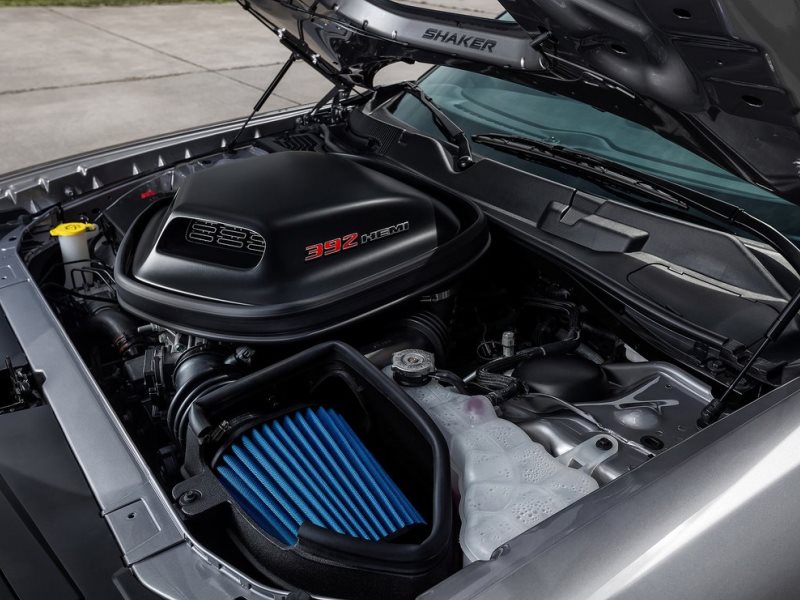
Performance
While overall performance varies according to engine and package selection, even the base SXT version of the Challenger acquits itself well by most measures. In fact, if you never drove a V8-powered Challenger, you’d likely be satisfied with the 305-horsepower V6.
That said, as you move up through the Challenger hierarchy things get more and more exciting and the engines get increasingly powerful. Regardless, though, the 2016 Dodge Challenger stays true to its muscle car roots—but again, with a contemporary twist.
Where the original muscle cars were best in a straight line, this new Challenger enjoys a spirited romp on winding roads as well. No, it doesn’t go like a sports car, but it will match the average sport sedan move for move. Make no mistake, this is a large car, and while the Dodge boys have worked diligently to get all of that mass to respond with aplomb, there are times when its size matters.
As for which engine we’d choose—and here we’re about to commit the equivalent of automotive heresy—it wouldn’t be the Hellcat. Yes, it’s a wonderful engine, yes it’s uber-powerful, and it’s also way more than you’ll ever need for the street.
In our opinion, the sweet spot in the Challenger lineup is the R/T Scat Pack. You’ll get more than enough power for anything that could possibly come up on the street. You’ll also get a nicely trimmed interior along with upgraded steering, suspension, and brakes—and it starts under 40 grand.
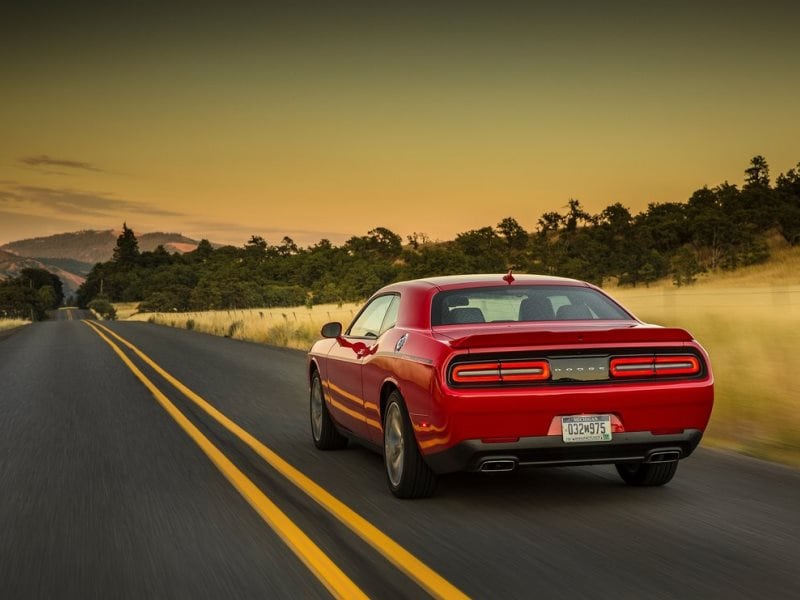
Final Thoughts
We admire the 2016 Dodge Challenger deeply, but we gotta keep it real y’all; the handsome coupe is fifteen minutes away from its sell-by date. Both Camaro and Mustang are rocking all-new designs and superior handling. Further, both of those cars can be had with convertible roofs, which is something this iteration of the Challenger has never offered.
Additionally, while we equally respect the Hellcat engine, truth be told it’s more about bragging rights than anything else. We’ve driven it extensively and can honestly say it’s really no faster than the R/T in terms of its sheer usability on the street.
Yes, I can say my Challenger has more power than your Lamborghini, but hey—nobody sees the engine. And, if you check it out, there really isn’t a significant styling differentiator telling people I got a Hellcat.
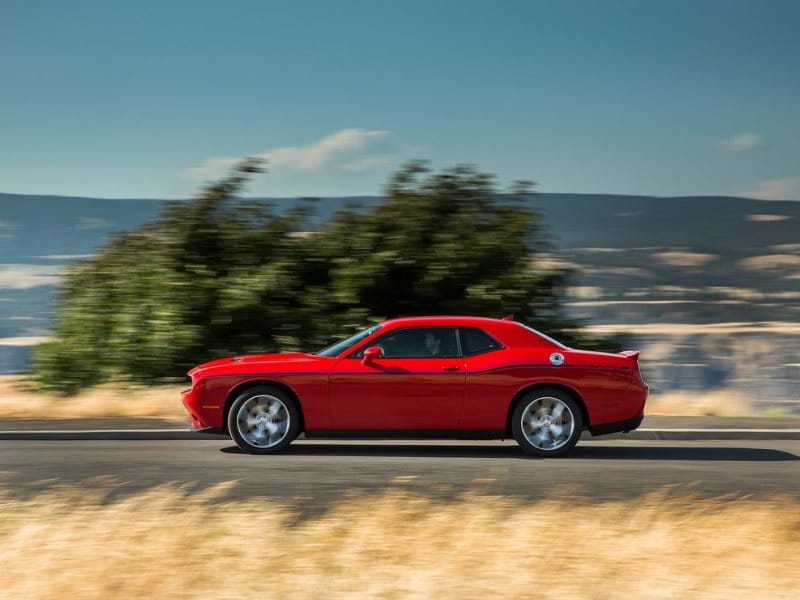
Pros & Cons
The 2016 Dodge Challenger offers outstanding power regardless of engine choice, and is a faithful homage to the original with handsome styling, respectable handling, and a user-friendly touchscreen interface.
However, the platform’s aging, it’s a bit too big by modern standards, and there’s no convertible option.
